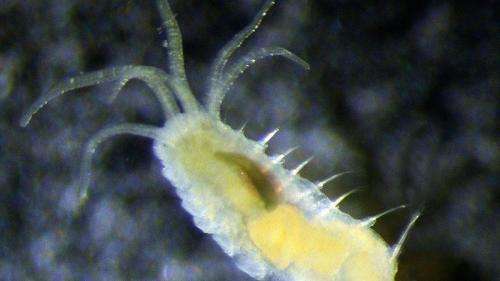The tentacled lagoon worm. Credit: Francis Bunker
Scientists at Heriot-Watt have helped conservationists trying to protect rare natural habitats but challenged to know how well they're doing when there's no-where else to compare it to.
Lagoons, shallow areas partly separated from the sea and containing both fresh and salt water, are among such increasingly rare habitats, and conservationists working to protect and maintain lagoons in the UK, Europe and around the world face the challenge of checking how well they are doing in both the absence of other similar environments to check them against, and the lagoons' own natural variations over time.
A new statistical technique
Nature conservation agencies in England and Wales have to manage lagoons which are some of the UK's rarest habitats containing some of the UK's rarest marine species, like the lagoon cockle and the tentacled lagoon worm. One such agency, the newly formed Natural Resources Wales, collaborated with colleagues at Heriot-Watt University's Edinburgh Campus, using a new statistical technique to solve the problem.
Dr Bill Sanderson, Reader in Marine Biodiversity at Heriot-Watt, said, "Lagoons are found in coastal regions throughout Europe, but they are both rare and fragile. As they are mainly salt water but also have some fresh water input they are challenging environments for both freshwater and marine species, and only a few, more specialised species can cope and thrive. Rarity and rapidly changing conditions make it hard to compare how well individual lagoons are doing.
"The Heriot-Watt team applied a process called multivariate control charts, a system originating in industry for measuring manufacturing tolerances, and developed by a mathematician in New Zealand. We see this offering a solution to a problem found throughout conservation and environmental management, and it will help conservationists check how well their protected areas are doing, whether it's a Welsh lagoon or a patch of rare rainforest in the tropics."
Provided by Heriot-Watt University






















